Sexual Reproduction: Meiosis
1/18
There's no tags or description
Looks like no tags are added yet.
Name | Mastery | Learn | Test | Matching | Spaced |
|---|
No study sessions yet.
19 Terms
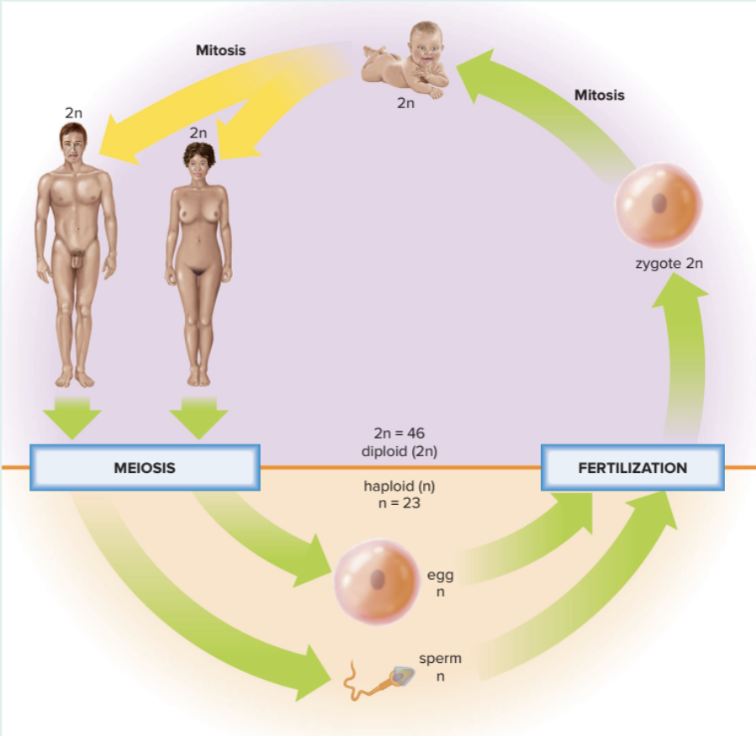
Human Life Cycle
2 types of Nuclear Division
Mitosis
occurs during growth & repair, ensures every body cell has 23 pairs of chromosomes
Meiosis
involved in formation of gametes → spermatogenesis (males) & oogensis (females)
ensures gametes are haploid + have 23 chromosomes, 1 from each pairs of chromosomes
importance of meiosis
reduce chromosomes number
shuffle chromosomes and genes to produce genetically different gametes → sperm and eggs

Homologous chromosomes
same size with the same centromere position → contain same genes
Diploid cells in humans have:
22 homologous pairs of autosomes
1 pair of sex chromosomes
= 46 chromosomes
Males → XY
Females → XX
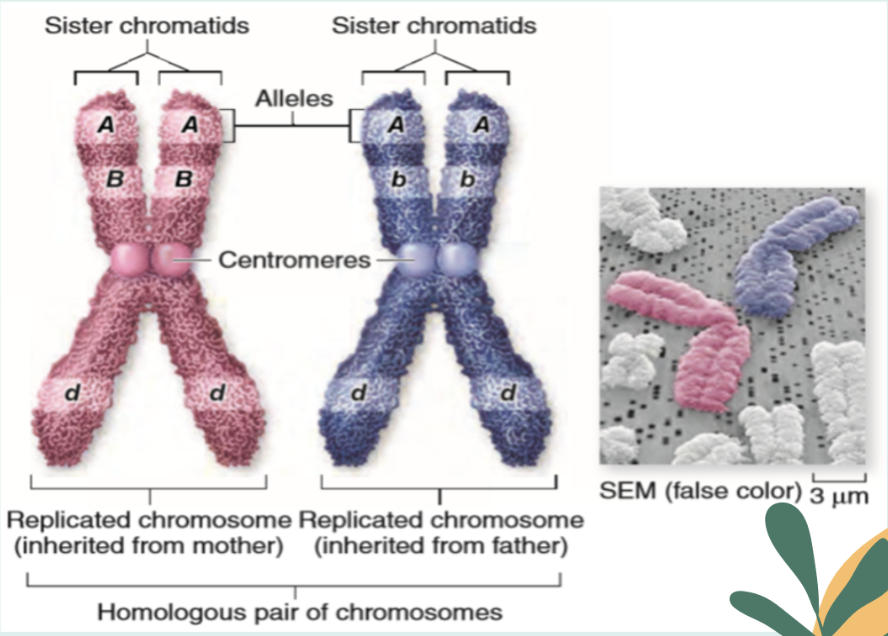
Homologous chromosomes (not identical)
two homologs differ in combination of alleles or versions of the genes they carry
each allele of a gene encodes a different version of the same protein
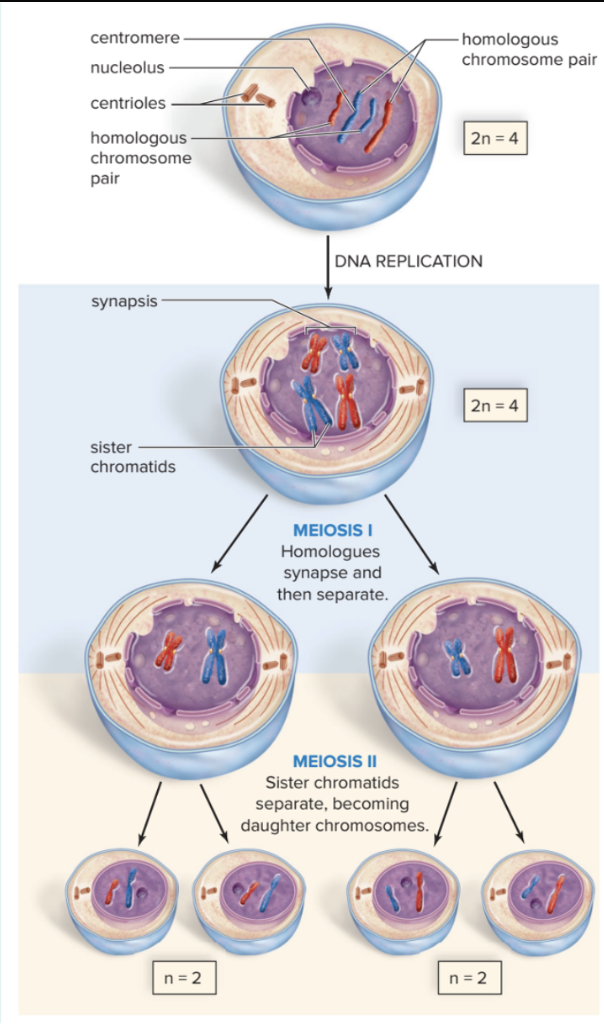
Meiosis Overview
Meiosis I → homologous chromosomes pair + separate
homologous pairs of chromosomes align during prophase I, line up at cell’s center during metaphase I, split apart during anaphase I, chromosomes arrive at poles in telophase I, cell divides (cytokinesis)
Meiosis II → sister chromatids of each duplicated chromosome separate
two products of meiosis I each divide → 4 haploid nuclei, then phases occur, then cytokinesis
Completion of Meiosis → 4 haploid daughter cells
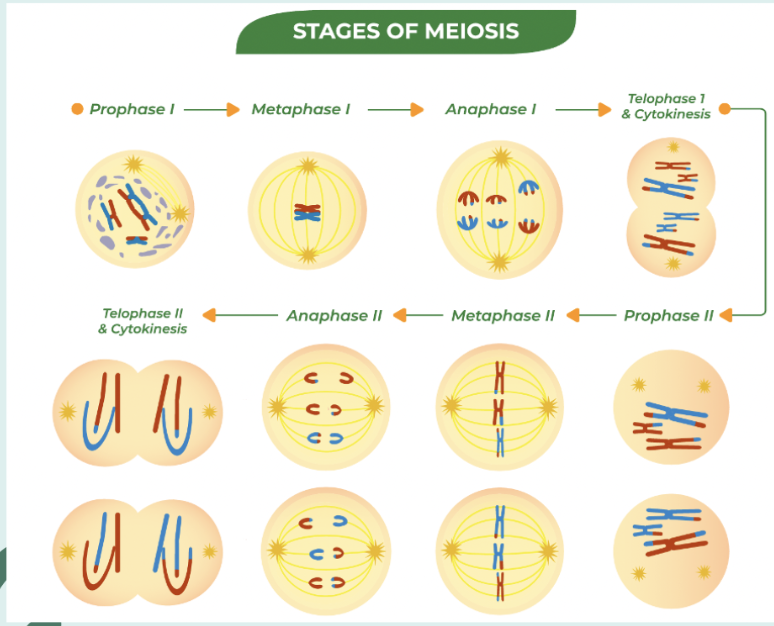

Synapsis and Crossing Over
In Meiosis I, homologous chromosomes of each pair (1 father & 1 mother) come together and line up side by side → synapsis
results in a tetrad, an association of four chromatids → 2 homologous chromosomes w/ 2 chromatids each
when a tetrad forms during synapsis, non-sister chromatids may exchange genetic material → crossing-over
shuffles the alleles + serves as the way meiosis brings about genetic recombination
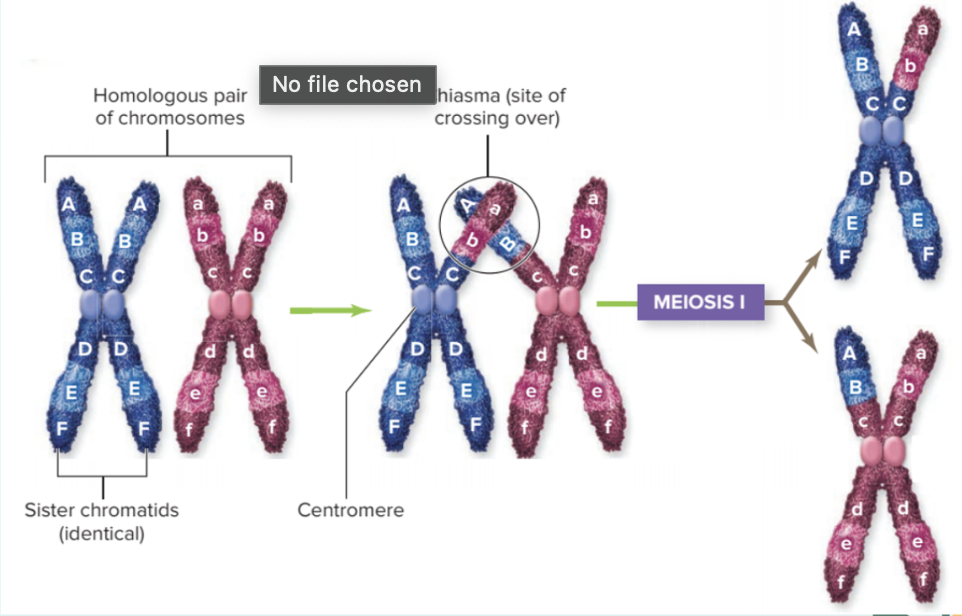
Genetic Recombination
chiasma indicate where crossing-over has occured
exchange of color = exchange of genetic material
when chromatids separate during Meiosis II, some daughter cells receive daughter chromosomes w/ recombined alleles

Independent assortment of homologous chromosomes
homologous chromosome pairs separate independently or randomly
when homologues align at the metaphase plate, maternal or paternal homologue may be oriented toward either pole
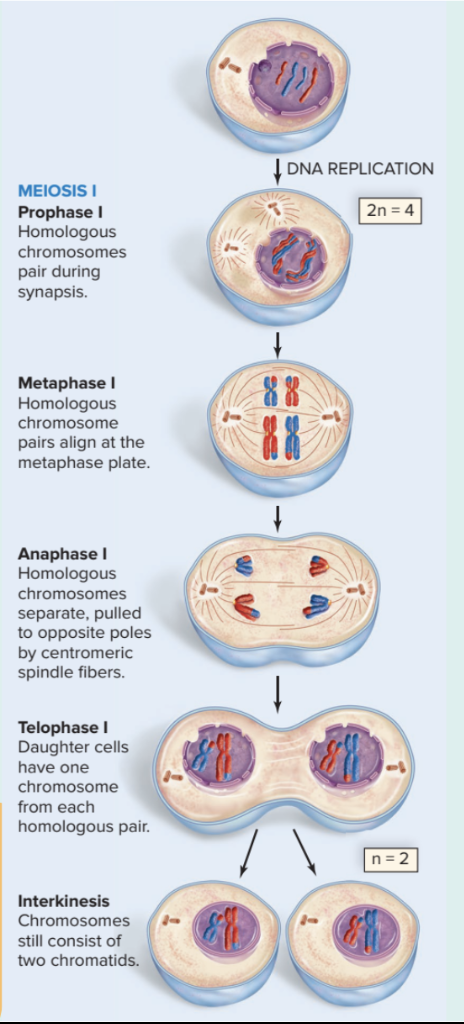
Phases of Meiosis I
Prophase I
tetrads form, crossing-over occurs as chromosomes condense; the nuclear envelope fragments
pairing of homologous chromosomes; crossing-over
Metaphase I
tetrads align at spindle equator
Anaphase I
homologues separate, dyads move to poles
Telophase
daughter nuclei are haploid, having received one duplicated chromosome from each homologous pair
Interkinesis
short rest period prior to 2nd nuclear division → Meiosis II
similar to interphase between mitotic divisions except that DNA replication does not occur (chromosomes are already duplicated)
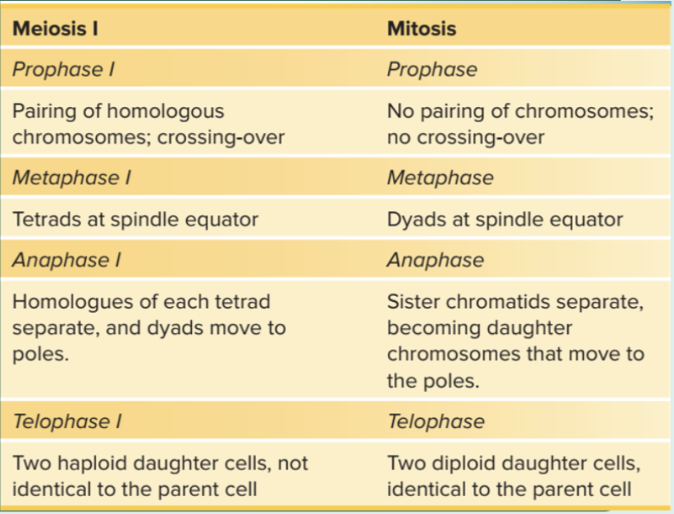
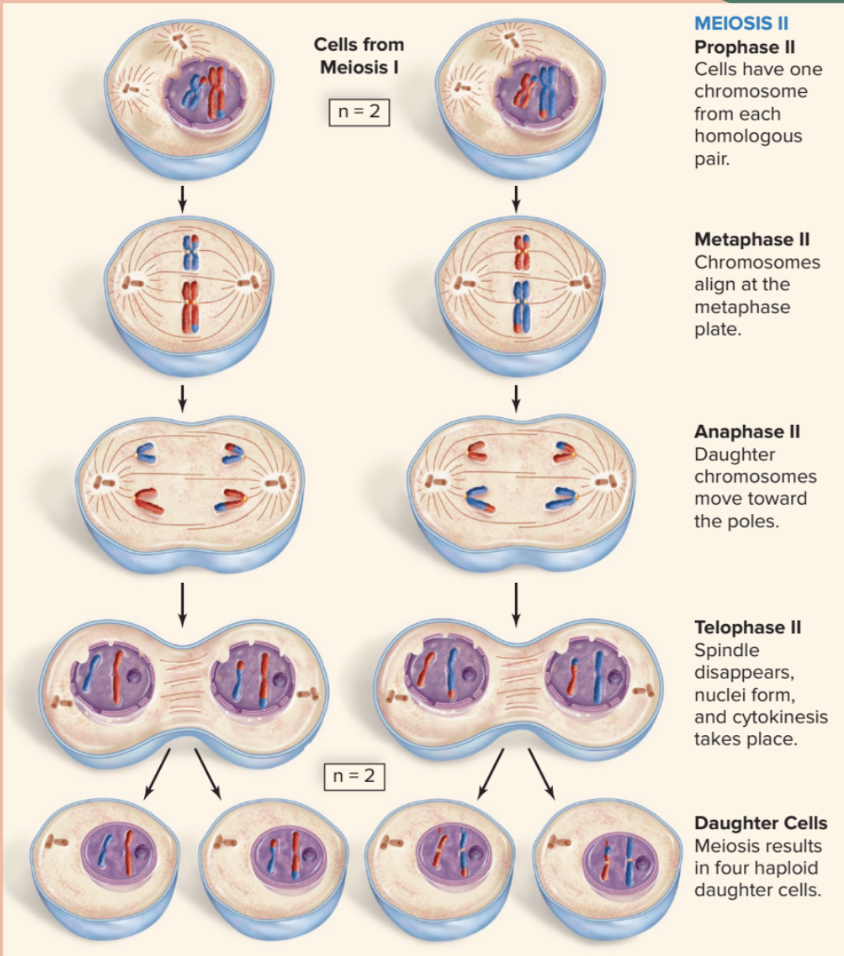
Phases of Meiosis II
Prophase II
chromosomes condense, nuclear envelope fragments
no pairing of chromosomes
Metaphase II
haploid no. of dyads at spindle equator
Anaphase II
sister chromatids separate, becoming daughter chromosomes that move to the poles
Telophase II
Four haploid cells are genetically different from each other and from parent cell
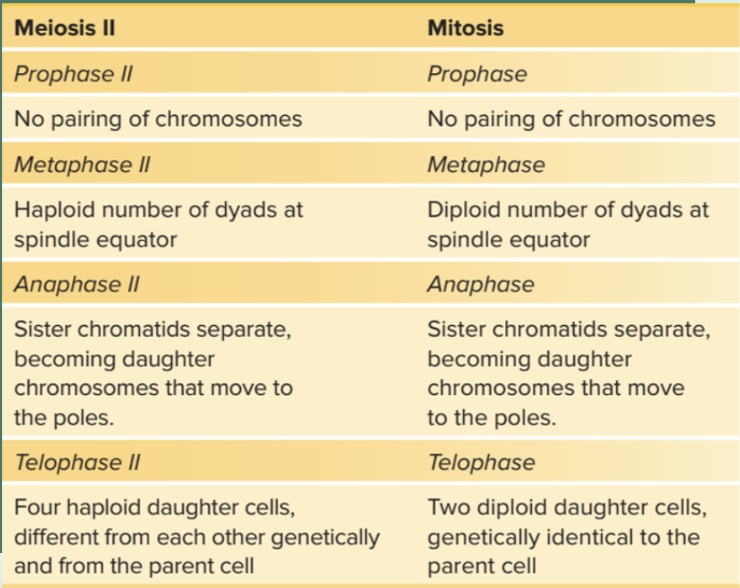
Changes in chromosomes number
nondisjunction
down-syndrome
extra or missing sex-chromosomes: XXX, XXY, XYY and XO
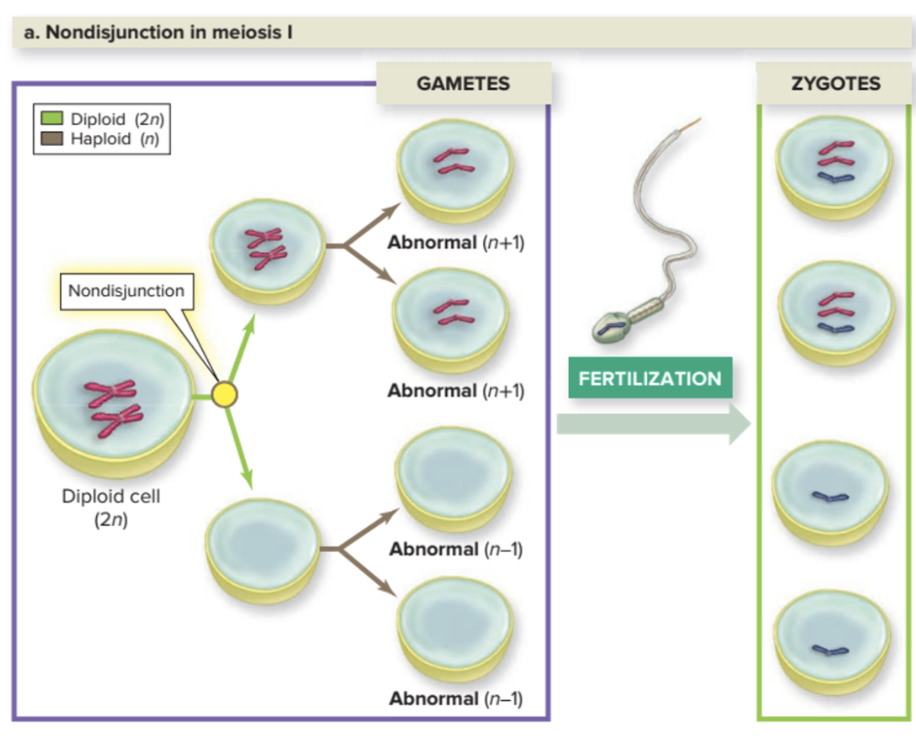
Nondisjunction
accounts for the inheritance of an abnormal number of chromosomes.
a homologous pair of chromosomes fails to separate during meiosis I
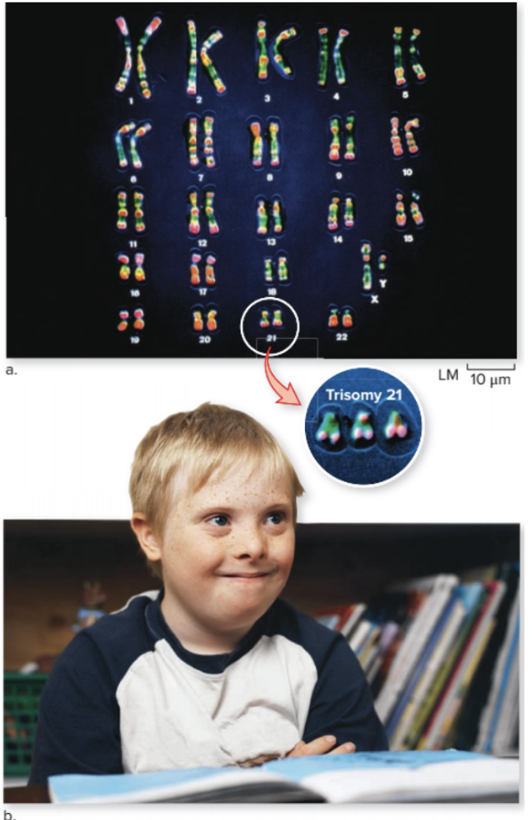
Down syndrome
Autosomal syndrome: inherits THREE copies of chromosome 21

Extra or missing chromosomes: xxx, xxy, xyy, and xo
Nondisjunction can produce a gamete that contains two X or Y chromosomes instead of only one. Fertilization then produces a zygote with too many sex chromosomes: XXX, XXY, XYY
Sex chromosome abnormalities
Triplo X (XXX)
Klinefelter (XXY)
Jacobs Syndrome (XYY)
Turner Syndrom (XO)

Triplo X (XXX)
females have 3 x chromosomes
increased learning disabilities, delayed speech, weak muscle tone
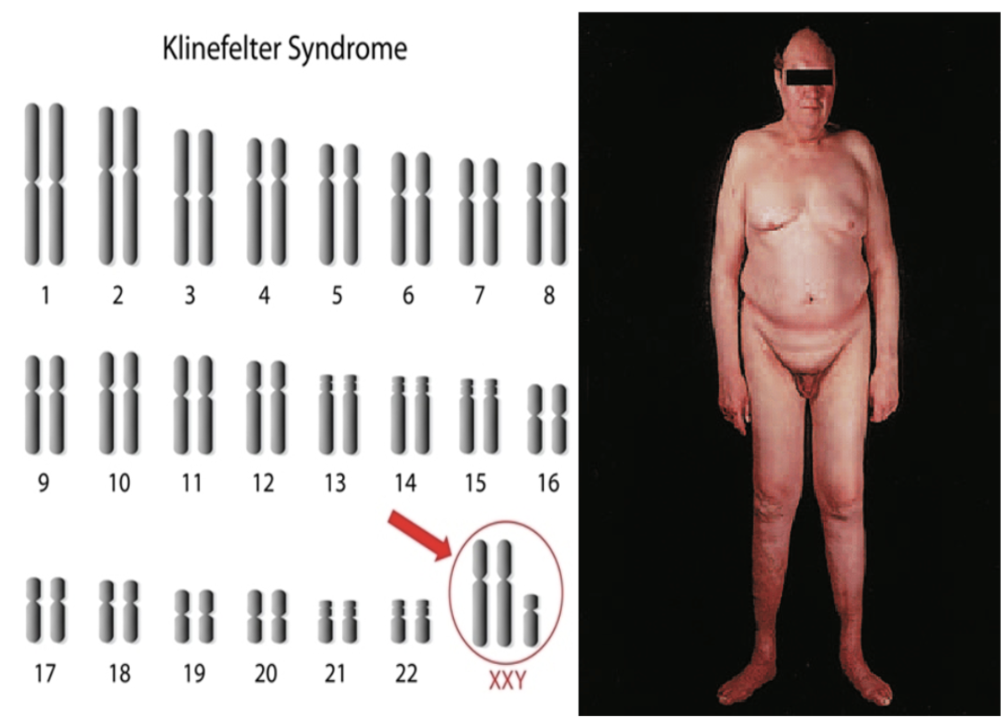
Klinefelter (XXY)
men who have an extra X chromosomes
affects different stages of physical, language and social development
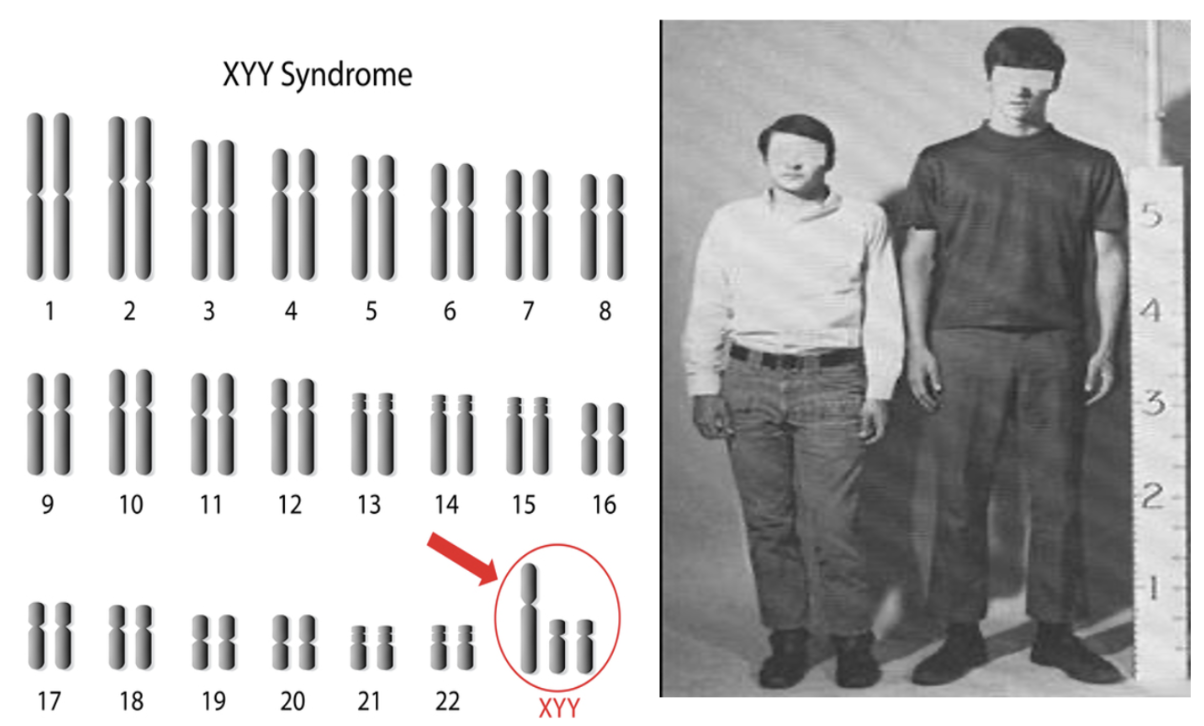
Jacobs Syndrome
extra copy of the Y chromosome in each of male’s cells
no unusual physical features
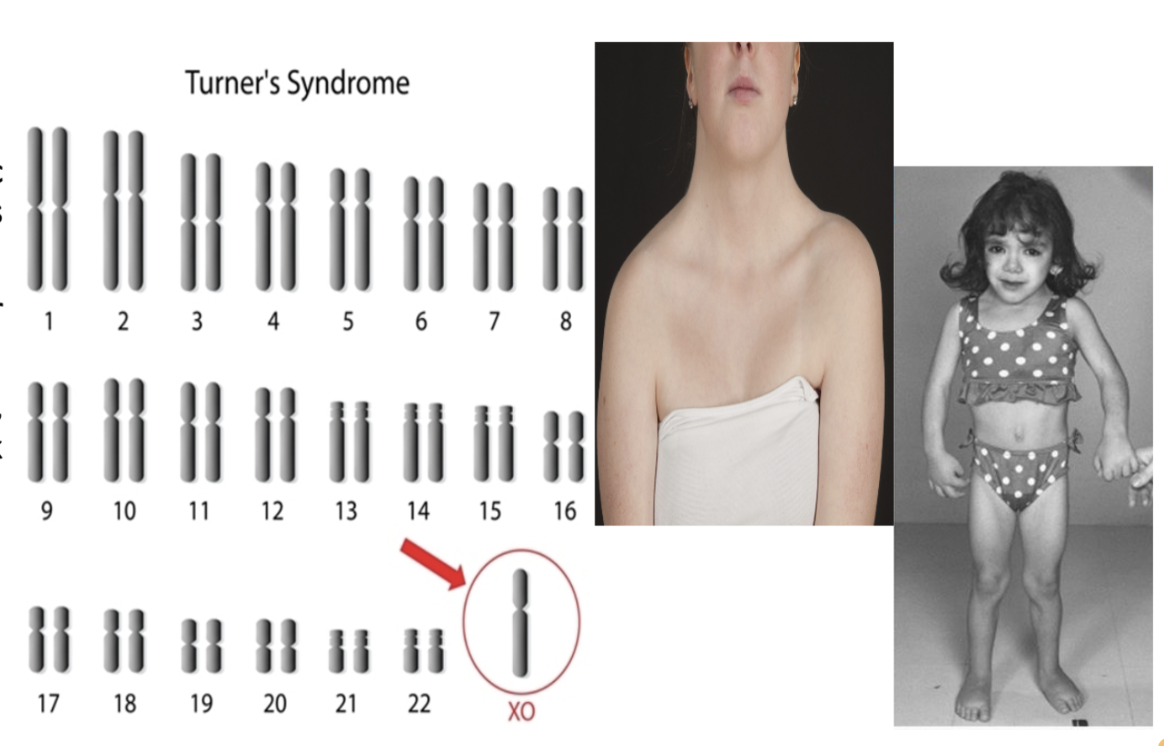
Turner Syndrome (XO)
genetic disorder affecting girl’s development
missing/incomplete X chromosome
ovaries dont work properly, short in height